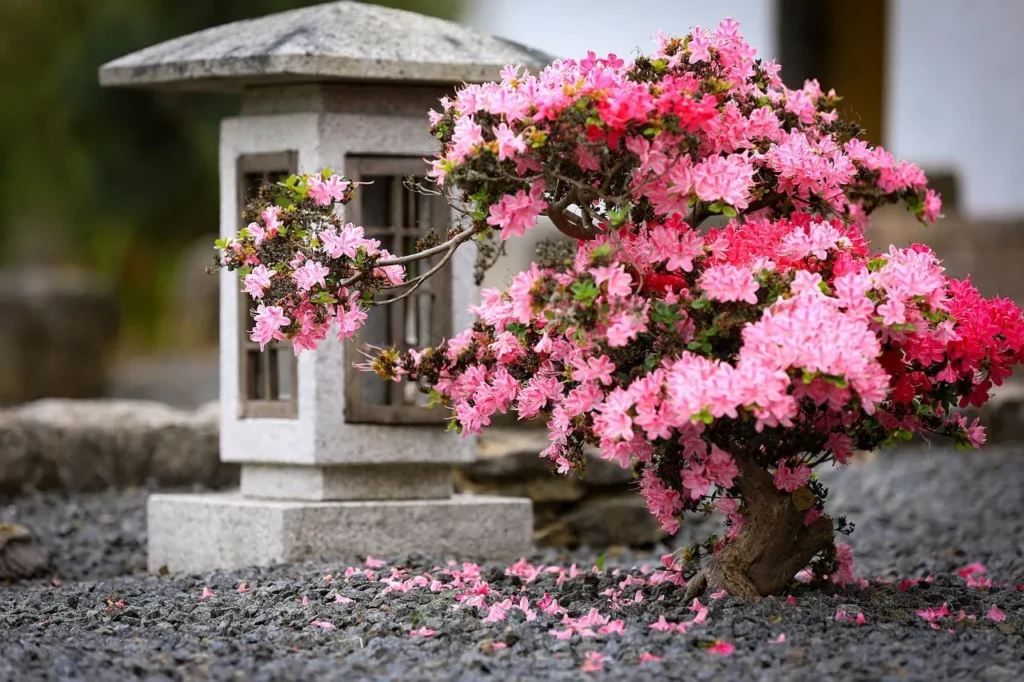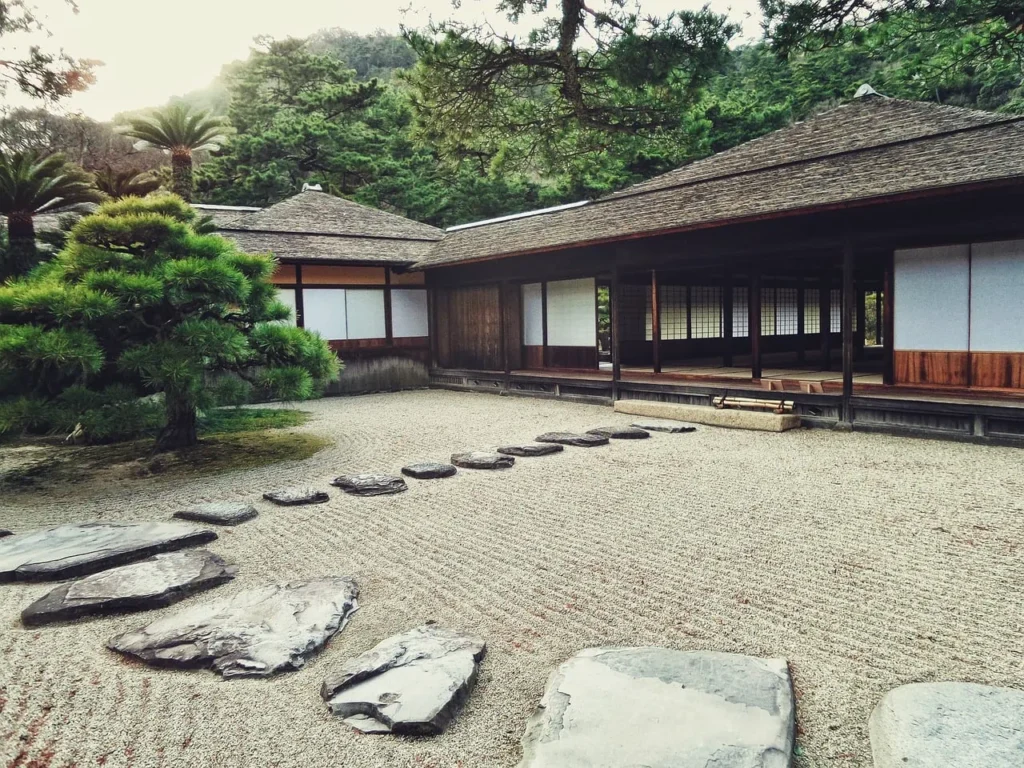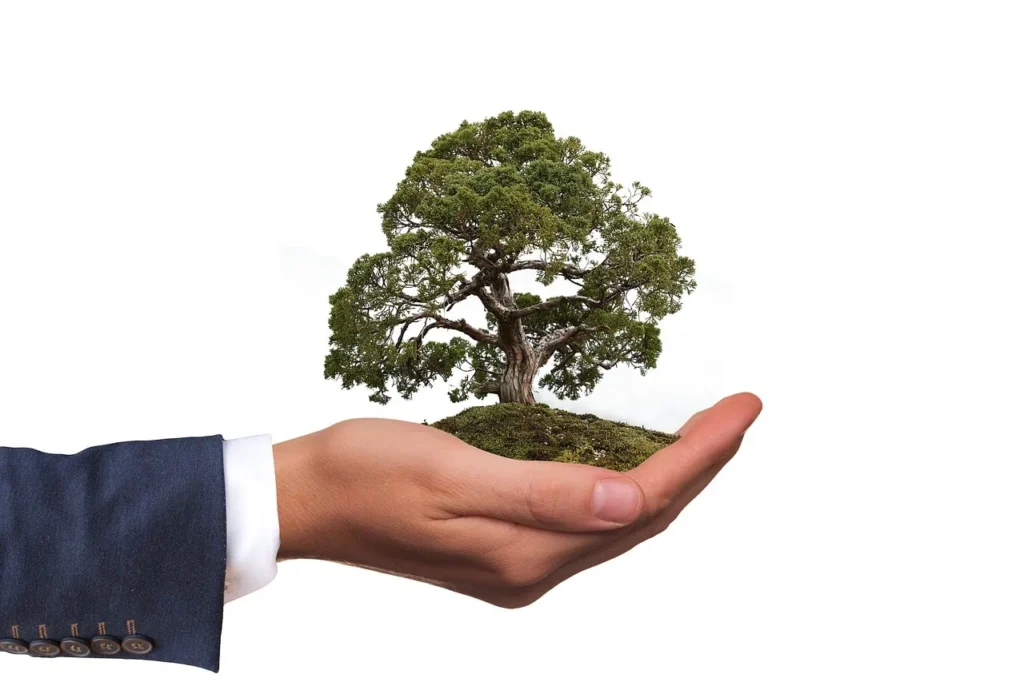The Birth of Bonsai in Ancient China

You know, the bonsai tree has a pretty awesome origin story. We’re talking way back, over a millennium ago in ancient China. The story begins with something called “penjing.” Don’t let the unfamiliar term throw you off, it just translates to “tray scenery” in English.
You see, in the early days, this wasn’t just about having cute, tiny trees in pots. Penjing was this whole creative discipline of crafting miniature landscapes. Imagine that: whole mountains, rivers, and forests in the palm of your hand, captured with rocks, water features, and yes, teeny, tiny trees. It was like having a slice of the cosmos on your tabletop.
And it wasn’t just about looks either. These miniature landscapes had a deeper, spiritual significance. They were a kind of sacred symbol, representing eternity, and were seen as magical portals between the world of humans and the spirit realm. Pretty deep, huh?
But as time went by, things started to change. The focus shifted from these detailed landscapes to individual trees. It’s like the penjing artists realized that sometimes less is more. And just like that, bonzai, as we know it today, was born.
So there you have it, the story of how ancient China gave us the gift of bonsai. Stay tuned as we continue our journey, diving deeper into how this ancient art form traveled, evolved and eventually ended up as a must-have piece of décor in modern homes.
Bonsai in Japanese Culture

Let’s hop on a time machine and head over to Japan around the 6th century. It was during this time of cultural exchange between China and Japan that bonsai was introduced to the land of the rising sun. Can you imagine the scene? The Japanese saw these tiny trees from China and were like, “Wow, we gotta get in on this!” And they did, but with their own unique twist.
See, the Japanese have this incredible ability to find beauty in simplicity, and they brought this sensibility to the art of bonzai. They stripped it down, doing away with most of the extra frills of rocks and water features that were common in the Chinese penjing. Instead, they focused more on the individual tree, highlighting the naked beauty of its trunks and branches. You see, in their eyes, these little trees weren’t just decorative pieces, they were storytellers, silently narrating tales of endurance and survival, just like trees braving the harsh natural conditions.
You know how in some circles, owning certain things is a status symbol? Like a luxury car, or a designer handbag. Well, in ancient Japan, having a bonsai in your home was akin to that. It was a symbol of honor and prestige and was often found gracing the homes of the noble and the wealthy. But don’t worry, you don’t have to be an aristocrat to enjoy bonzai today.
Next stop on our bonzai journey? We delve into how Buddhism and Zen philosophy influenced the art of bonsai, deepening its spiritual significance and global appeal. So, buckle up, folks!
Influence of Buddhism and Zen on Bonzai

Okay, let’s do a little time-traveling again. We’re still in Japan, but now we’re getting a bit spiritual. The Zen Buddhists have entered the chat, and they’re bringing a whole new perspective to the bonsai game.
You see, Zen Buddhism is all about seeking simplicity, finding balance, and embracing tranquility. It’s not about flashy, over-the-top displays. And the bonzai? Well, it fits this philosophy like a glove. Its quiet growth, the harmony between the tree and its pot, the focus on every single leaf and branch – it’s like the perfect Zen meditation tool.
Zen monks saw bonsai trees not just as decoration, but as living, breathing meditation aids. I mean, just imagine sitting in quiet contemplation, losing yourself in the intricate details of a miniature tree. Sounds peaceful, right?
But it’s not just about the zen chill. The bonzai tree is also a lesson in balance. The Zen monks were striving for a perfect harmony between the ‘heaven’ (the tree’s canopy) and the ‘earth’ (the pot). It’s like they were creating this tiny model of the universe, right there on their temple grounds.
You’ve probably heard about the Zen principle of harmony. Well, that’s what the bonzai embodies. It’s a living testament to the idea that everything in the universe is connected, that every element has its place, its role to play.
So there you have it. That’s how Zen Buddhism played a crucial role in the evolution of bonsai. This influence not only deepened the spiritual significance of the bonzai but also broadened its appeal, making it a hit not just in Japan but across the globe. Pretty cool, huh? But hold on, our bonsai journey isn’t over yet. Next stop – the western world!
Bonsai in the Western World

Let’s crank up our time machine and zoom ahead to the 19th century. That’s when our friend bonsai began to break into the western world. Imagine being a European explorer in Japan, seeing these tiny, intricate trees for the first time. Pretty mind-blowing, right? Naturally, they couldn’t resist taking a few of these green gems back home.
And let’s not forget the soldiers! After World War II, many servicemen and women stationed in Japan got a chance to witness the art of bonsai first-hand. For some, it was love at first sight. They packed up these little trees and transported them across the sea back to America and other parts of the western hemisphere. And just like that, a new bonsai fandom was born.
The art of bonsai didn’t just land in the western world; it flourished! These tiny trees, so rich with history and symbolism, became a fascinating new hobby for many. And it wasn’t just a fascination with the tree itself, but the whole process of caring for it, shaping it, nurturing it. People were drawn to the unique blend of art, horticulture, and meditation that bonsai offered.
So here we are today, with bonsai trees brightening up living rooms from New York to New Zealand. But the story doesn’t end here. The art of bonsai is ever-evolving, with new techniques, styles, and interpretations emerging all the time. Who knows where the bonsai tree will take us next? Stay tuned, my friends!
Modern Bonzai and its Popularity
So, here we are, in the world of the 21st century. We’ve got smartphones that put the world at our fingertips, drones delivering packages, and we’re even talking about living on Mars. And amidst all this technological whirlwind, we have the bonsai, a symbol of ancient artistry and tranquility, still capturing hearts and imaginations. Isn’t that something?
The love for bonsai today goes beyond just their aesthetic charm. They’ve become these little pieces of living art in our homes, offices, even our schools. From high-powered CEOs to college students, the allure of the bonsai tree is universal.
And here’s the cool part. As we dive deeper into the bonsai universe, we realize that it’s not a stagnant art form, frozen in time. It’s ever-evolving, ever-growing (pun intended). New trends are emerging, new techniques are being developed, and new interpretations are being explored. Heck, there are even bonsai competitions and exhibitions held globally where enthusiasts can showcase their tiny masterpieces!
From ancient China to modern-day living rooms across the globe, the bonzai tree has traveled far and wide. But, its journey is far from over. As long as there are those of us who seek tranquility amidst chaos, who appreciate the beauty in simplicity, and who understand the profound connection between nature and ourselves, the bonsai will continue to flourish. And that, my friend, is the modern-day charm of the bonsai.